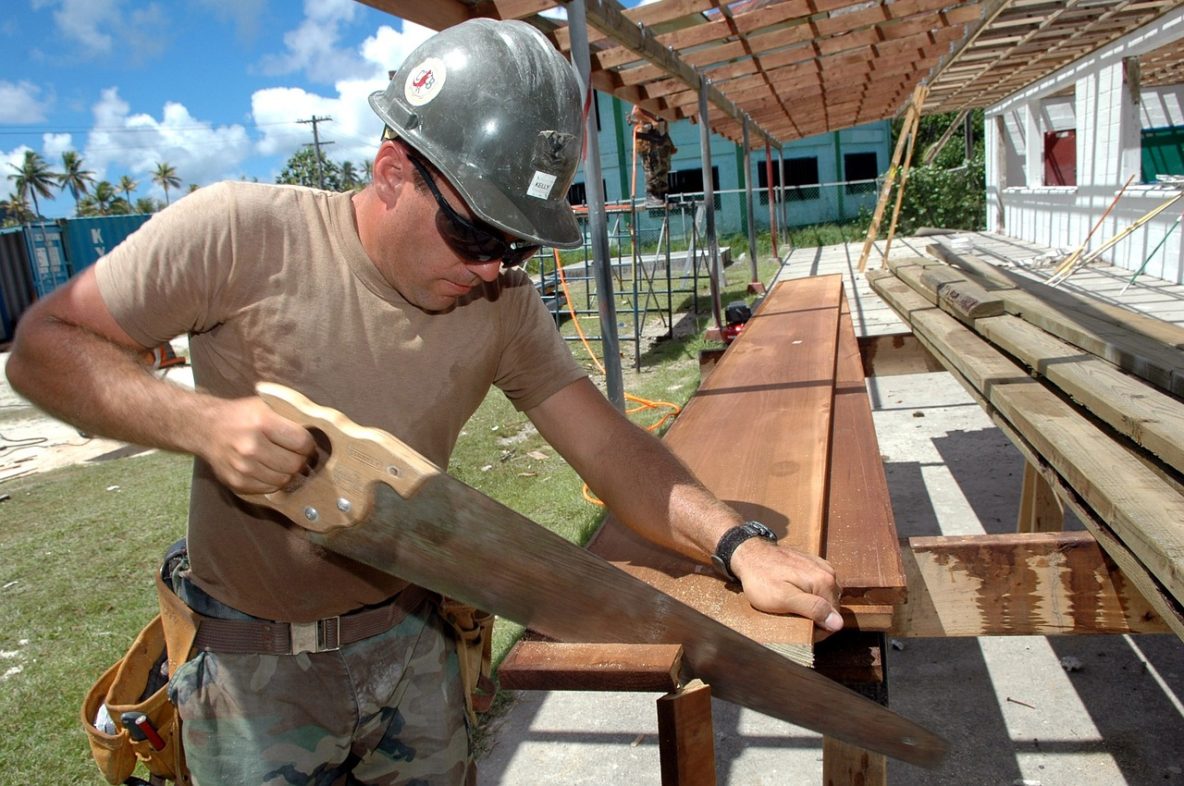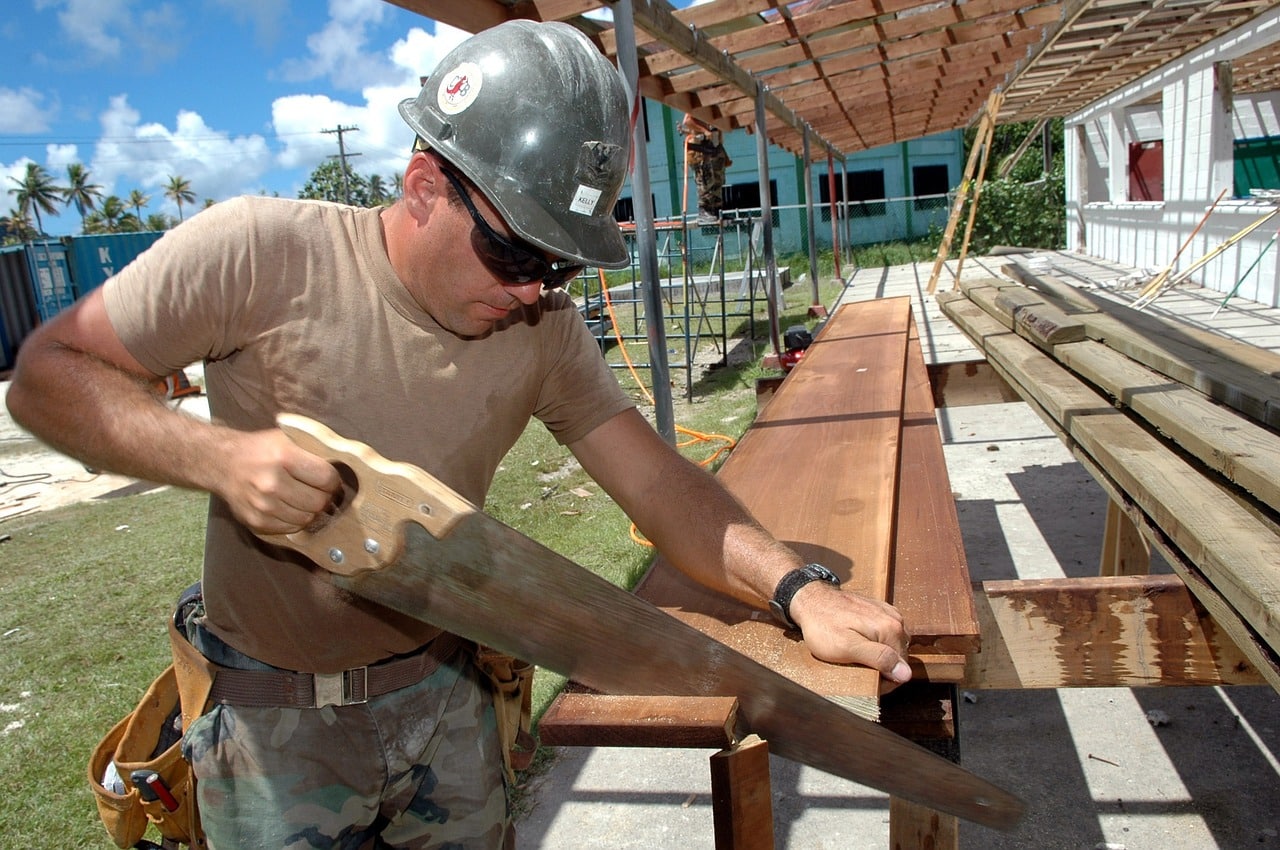NY Workers Comp Rate for Class Code 5645 for Carpenters
Description: Code 5645 is applied to carpentry work when the construction of a private residence is performed by employees of the same contractor. This work includes the construction and erection of the sill, rough framework, rough floor, studs, joists, rafters, roof deck, all types of roofing materials, sidewall sheathing, siding, doors, wallboard installation, lathing, windows, stairs, finished flooring, cabinet installation and all interior wood trim. Carpentry repair or remodeling qualifies as Code 5645 if operations of an interior or exterior nature must take place along with some framing or structural carpentry renovation of the premises that would ordinarily be assigned to that code.
Materials Used: carpentry tools, lumber, roofing materials, sidewall sheathing, aluminum or vinyl siding, doors, etc.
Pricing: Solid companies with a good loss history can obtain better than average pricing on NYS Workers compensation rates.
CARPENTERS
Category: Casual and Artisan Contractors
SIC CODE: 1751 Carpentry Work
1521 Single-Family Housing Construction
NAICS CODE: 238130 Framing Contractors
238130 Framing Contractors
238330 Flooring Contractors
238350 Finish Carpentry Contractors
236118 Residential Remodelers
Suggested ISO General Liability Codes: 91340, 91341, 91342
Suggested Workers Compensation Codes: 5645, 5437, 5403
Description of operations – NY Workers Comp Rate for Class Code 5645:
Carpenters may perform interior work only, exterior work only, or both. Exterior carpentry includes framing work, such as structural support for a new building or structure. Interior carpenters perform remodeling, repair, finishing or refinishing. Interior carpentry consists of either rough or finish work. Rough work includes framing windows and doors, laying floor joists and subfloors, or stairways. Finish work involves hanging doors, installing baseboards and molding around doors and windows, and making or installing cabinets, shelving or other built-ins.
Property exposures
at the carpenter’s own location are usually limited to an office and storage of materials, equipment, and vehicles. If the carpenter does shop woodworking, fire can result from the flammability of wood, paints, varnishes, and wood dust. There should be adequate ventilation and a dust collection system. Flammable varnishes and glues should be properly labeled, separated, and stored away from combustibles. Some carpenters store lumber in their yards, increasing the potential for fire loss. Three-sided storage structures are highly susceptible to wind damage.
Crime exposures
are from employee dishonesty. Background checks, including criminal history, should be performed on all employees providing services to customers or handling money. All ordering, billing and disbursement should be handled as separate duties with reconciliations occurring regularly.
Inland marine exposures
include accounts receivable if the carpenter offers credit to customers, contractors’ equipment for owned or rented tools and equipment, goods in transit, installation floater, and valuable papers and records for customers’ and suppliers’ information. Equipment at a job site can be damaged by drops from heights, weather damage, or being struck by vehicles. Equipment and supplies left at job sites are subject to theft and vandalism. Lumber or woodwork can be damaged during transport from shifting, improper loading or inadequate tie down. Oversized loads can be damaged by collision with stationary structures or other vehicles.
Premises liability exposures at the carpenter’s shop or office are generally limited due to lack of public access. Fires or fumes from woodworking and/or lumber storage operations can spread to neighboring businesses or homes. Outdoor storage may create vandalism and attractive nuisance hazards. Off-site exposures are extensive. Jobsite operations include the potential for bodily injury to the public or employees of other contractors, or damage to their property or completed work. Tools, power cords, building materials and scrap all pose trip hazards even when not in use. The use of saws and other power or hand tools is inherently hazardous due to sharp edges and moving parts. In enclosed buildings, the buildup of dust and scraps can result in catastrophic fire and explosion. Disposal of waste materials (dust, scrap, varnishes or paints) could create environmental hazards. There may be significant subcontractor and contractual liability exposures.
Completed operations liability exposures
are high if the carpenter provides the structural framework of a building due to the potential for collapse. Quality control and full compliance with all construction, material, and design specifications are necessary. Inadequate monitoring of work orders and change orders may be a concern. Poor record-keeping may necessitate payment of otherwise questionable claims. Inspection and written acceptance of the work by the owner or general contractor is critical.
Automobile exposures
are limited unless lumber and pre-made items are transported by the carpenter. MVRs must be run on a regular basis. Random drug and alcohol testing should be conducted. Vehicles must be well maintained with records kept in a central location. Hazards of transport include failure to secure the load properly and equipment failure, especially tie-downs and hitches. If oversized items are transported, vehicles must be clearly marked.
Workers compensation exposures
vary based on the size and nature of the job. Work with hand tools and sharp objects such as saws, chisels and nails can result in cuts, piercings, and accidental amputation. Back injuries, hernias, strains, and sprains can result from lifting. Minor injuries may be frequent even when the severity exposure is controlled. When work is done on ladders and scaffolds, there is a potential for severe injury or death from falling, being struck by falling objects, or adverse weather conditions. The absence of good maintenance of scaffolds, proper use of basic safety equipment, such as properly installed guards, steel-toed shoes, and eye protection, and strict enforcement of safety practices may indicate a morale hazard. Employees must be carefully selected, trained and supervised. Occupational disease exposures can result from exposure to noise, dust, and chemicals, such as from pressure-treated lumber.


